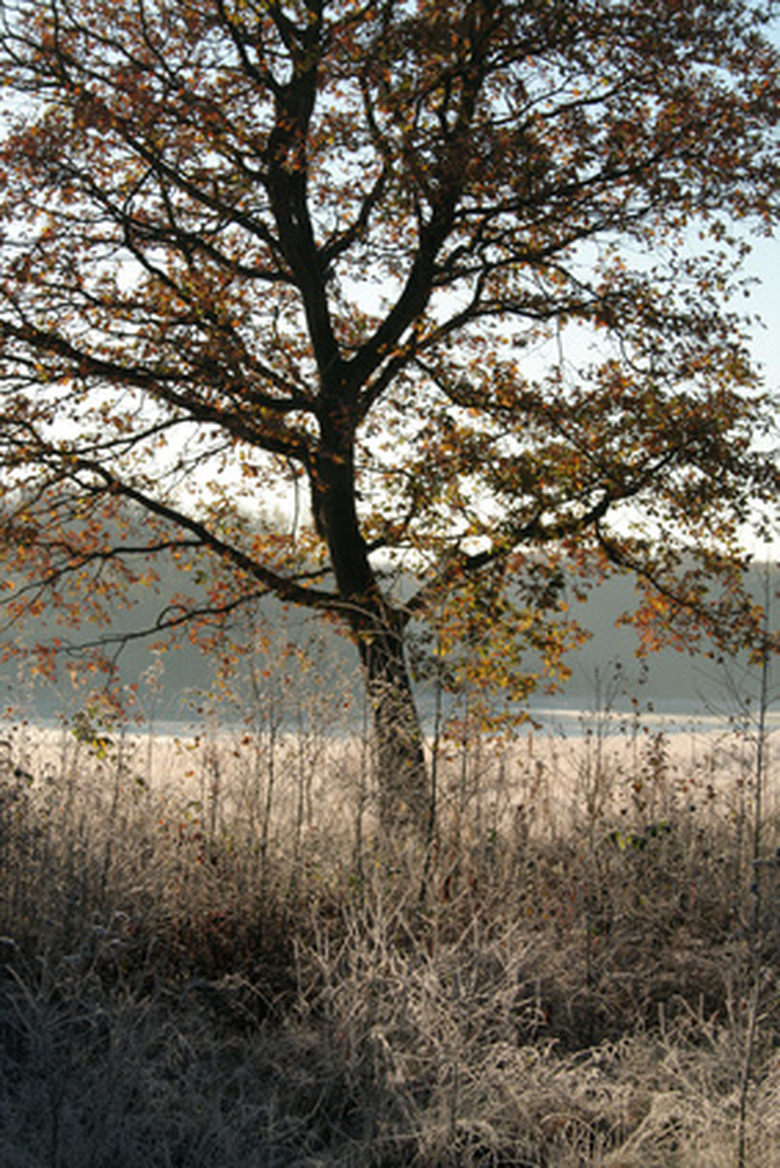Deciduous Oak Trees
Oak trees are one of the most widely observed trees worldwide, according to the Oklahoma Cooperative Extension Service. There is an abundance of deciduous oak tree species. For example, in Oklahoma alone there are 21 different oak species. Diverse characteristics from species to species make the deciduous oak tree a versatile addition to the home landscape.
Identification
Deciduous oak trees are those trees with leaves that change color during the fall season and often drop from the tree. In contrast, evergreen oaks have foliage that remains dark green and stays on the branch year round. Deciduous oaks, or the Quercus species, are known for their large size and pleasing aesthetic impact. Growth rate and height is variable depending on the particular species. Some oaks grow up to 100 feet tall, according to the Clemson University Extension in Clemson, South Carolina.
- Oak trees are one of the most widely observed trees worldwide, according to the Oklahoma Cooperative Extension Service.
- Deciduous oak trees are those trees with leaves that change color during the fall season and often drop from the tree.
Placement
Deciduous oak trees are often used to provide shade. Due to their great size they are not ideal for small residential spaces. You must provide your trees with a large enough area for their wide-spreading canopies and root systems. Deciduous oak trees thrive in full sun exposure to partial shade and should be grown in moist, acidic, well-drained soil rich in nutrients, according to the Clemson University Extension. Though some deciduous oaks tolerate wet or dry soils, alkalinity will cause problems like iron deficiency.
Common Types
Widely planted species are all similar but vary in particular traits. Water oak (Q. nigra) is an oak tree with a rapid growth rate of 25 feet per 10 years, reaching an overall height and width of 50 to 60 feet, according to the Clemson University Extension. Water oaks display shiny green leaves that turn yellow during the fall. White oaks (Q. alba) have a slow growth rate of up to 15 feet per 12 years, reaching a mature height and spread of approximately 50 to 100 feet. These oaks display vivid green leaves that become deep red to purple in the fall.
- Deciduous oak trees are often used to provide shade.
- Water oak (Q. nigra) is an oak tree with a rapid growth rate of 25 feet per 10 years, reaching an overall height and width of 50 to 60 feet, according to the Clemson University Extension.
Considerations
Common pests and insects of the oak tree include oak leaf blister, powdery mildew and galls. Oak leaf blister is a fungal infection that causes blistered spots on leaf surfaces. Damage is usually mild and cannot be treated once infection occurs. Maintain vigorous trees for resistance. Powdery mildew is another fungal infection. This disease causes white patches on leaves that resemble mildew, as the name suggests, according to the Clemson University Extension. Powdery mildew is not usually severe enough for chemical control. However, with extreme infection apply myclobutanil or other appropriate fungicides for management. Galls on oak trees are abnormal growths of plant tissue that occur as a hormonal response to the presence of insects on plant surfaces. For control, no chemical treatment is advised. Remove and destroy galls and affected plant parts.
- Common pests and insects of the oak tree include oak leaf blister, powdery mildew and galls.
- Powdery mildew is not usually severe enough for chemical control.
Expert Insight
Consider adding a layer of mulch to the area of soil surrounding your deciduous oak trees. Since oaks prefer consistently moist soil and are susceptible to a wide variety of diseases and insect pests, the addition of organic matter like mulch increases water retention and lessens the potential for weed growth, advises the University of Florida IFAS Extension. Weeds often act as hosts to diseases and pests that spread to oak trees.
